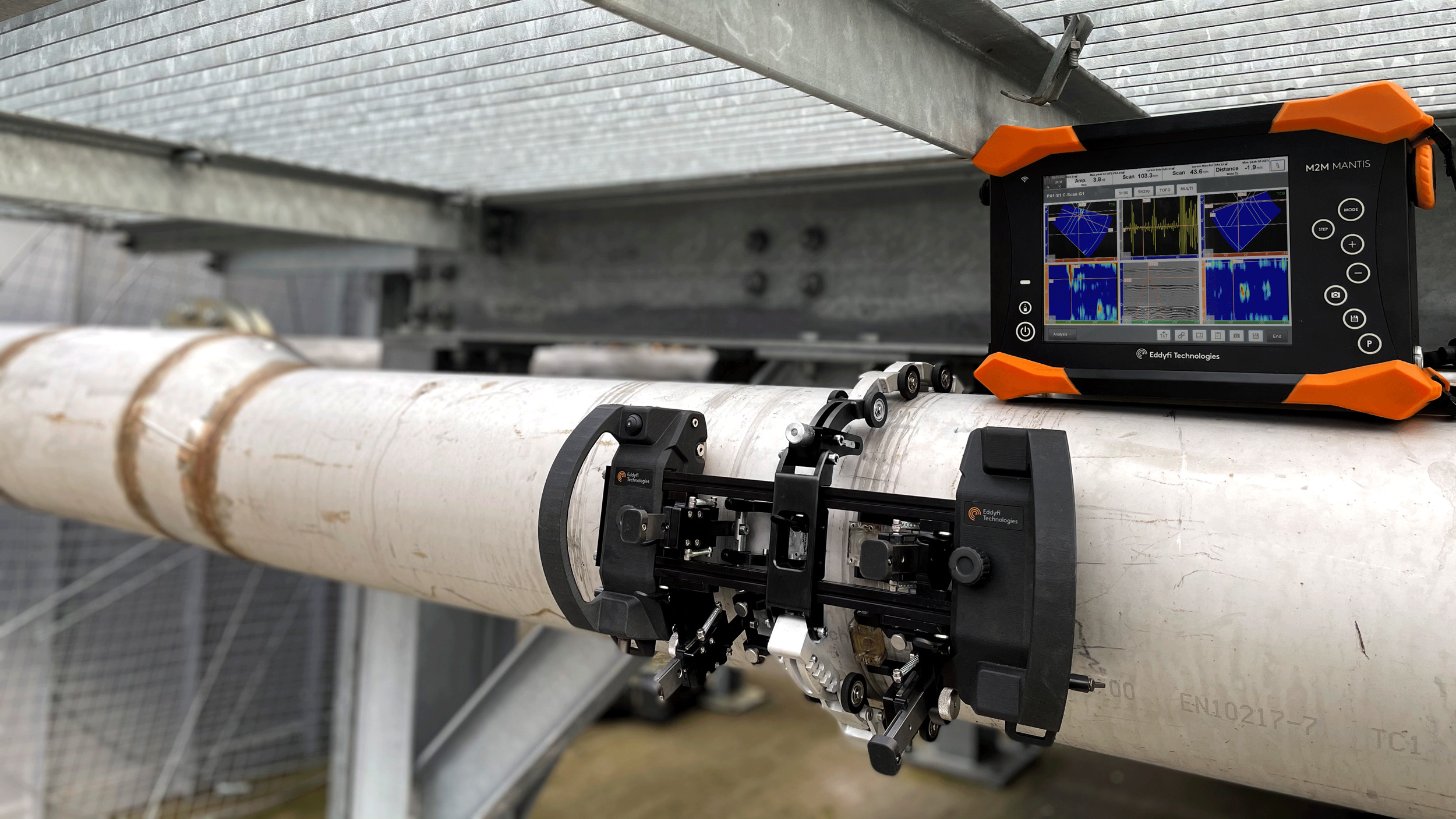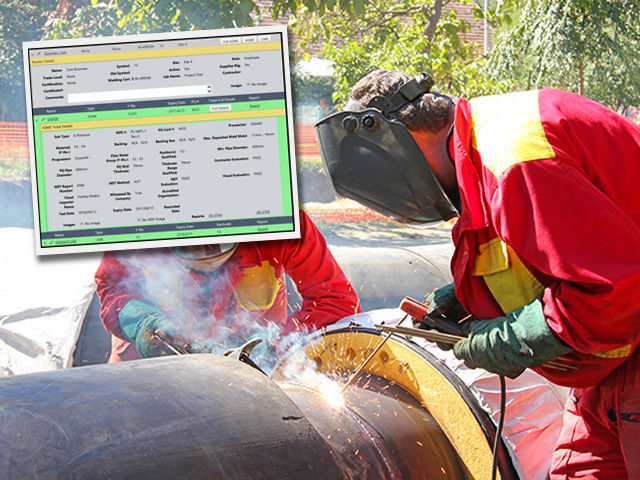Pipeline Welding Inspection: Cutting-Edge Approaches for Accurate Assessments
Pipeline Welding Inspection: Cutting-Edge Approaches for Accurate Assessments
Blog Article
Comprehensive Overview to Pipeline Welding Evaluation: Guaranteeing Stability and Security in Pipe Building And Construction and Upkeep
The stability and safety and security of pipelines are paramount in today's infrastructure landscape, underscoring the critical duty of welding inspection in pipeline building and construction and maintenance. A detailed guide on this subject not just highlights the need of evaluating weld quality however likewise deals with the numerous inspection methods offered, such as radiographic and ultrasonic testing. By recognizing typical defects and their effects, stakeholders can apply ideal practices that guarantee compliance and durability. Nonetheless, the complexities associated with welding inspection raise significant inquiries about industry requirements and the progressing technologies that may redefine these practices.

Significance of Welding Examination
Welding evaluation plays an essential role in guaranteeing the stability and safety of pipeline systems. It acts as an essential procedure that validates the quality and dependability of welded joints, which are usually the most weak spots in pipeline building and construction. With systematic assessment, examiners can determine potential flaws such as cracks, porosity, and incomplete fusion, which might jeopardize the architectural integrity of the pipeline.
The significance of welding inspection prolongs past mere conformity with sector requirements; it additionally safeguards public health and the atmosphere. If failings occur, pipelines lugging dangerous products pose considerable dangers. Reliable assessment protocols help stop ruptures and leakages, minimizing environmental damages and protecting communities. Furthermore, complete inspections can enhance the longevity of pipe systems, reducing the requirement for costly fixings and downtime.
In addition to ensuring safety and compliance, welding examination cultivates a culture of quality control within organizations. By prioritizing examination throughout the welding procedure, companies can build an online reputation for reliability and excellence, ultimately bring about increased customer self-confidence and service possibilities (Pipeline Welding Inspection). Thus, the value of welding inspection can not be overemphasized in the context of pipeline construction and upkeep
Secret Welding Processes
Numerous welding procedures are used in pipeline building and construction, each with its very own advantages and applications. Amongst the most commonly utilized methods are Protected Steel Arc Welding (SMAW), Gas Tungsten Arc Welding (GTAW), and Gas Metal Arc Welding (GMAW) SMAW is preferred for its adaptability and capability to do well in various ecological problems, making it ideal for field applications.
GTAW, typically referred to as Tungsten Inert Gas (TIG) welding, is recognized for its capacity to produce top quality welds with superb control over heat input, making it ideal for thin-walled pipelines and stainless steel products. GMAW, or Metal Inert Gas (MIG) welding, provides high deposition rates and is reliable for large-scale tasks, typically utilized in the manufacture of pipelines in controlled environments.
Furthermore, Submerged Arc Welding (SAW) is made use of for its deep infiltration and high efficiency, especially in the building and construction of large-diameter pipelines. Each of these processes contributes to the overall stability and safety of pipeline building and constructions, enabling welders to select the most suitable technique based on product kind, job requirements, and ecological conditions. Recognizing these essential welding procedures is crucial for reliable pipe welding assessment.
Typical Problems and Their Impact

Porosity, identified by little gas pockets entraped within the weld, deteriorates the recommended you read product and can lead to leakages. Fractures, which might take place because of thermal anxieties or incorrect air conditioning, can result and circulate in structural failing under pressure. Undercutting, where the base metal is worn down along the weld grain, decreases the efficient cross-section of the pipe, increasing the threat of crack.
Incomplete blend occurs when the weld steel does not properly bond with the base metal, leading to weak areas that may stop working under stress and anxiety. Slag incorporation, the entrapment of non-metallic material within the weld, can likewise damage the joint's integrity. Recognizing and addressing these problems early in the building procedure is critical to making certain the lasting reliability and safety of pipeline systems, thus guarding both the facilities and the setting.
Examination Devices and techniques

Visual examination is the very first line of protection, permitting assessors to determine surface abnormalities, imbalance, or various other noticeable problems. Ultrasonic testing uses high-frequency acoustic waves to find internal problems, offering precise deepness measurements and characterizing problems without damaging the weld. Radiographic screening uses X-rays or gamma rays to produce photos of the weld, making it possible for the recognition of interior spaces, fractures, or incorporations.
Magnetic fragment testing is especially reliable for spotting surface and near-surface suspensions in ferromagnetic products. This technique involves using an electromagnetic field and fine iron bits to the weld, exposing flaws via the buildup of particles at imperfection sites.
Along with these methods, specialized tools such as automated ultrasonic testing devices and digital radiography systems boost inspection accuracy and effectiveness, making sure a thorough examination of pipeline welds throughout construction and upkeep.
Ideal Practices for Compliance
Complying with best practices for conformity in pipeline welding examination is essential for ensuring the honesty and safety of the infrastructure. Organizations has to establish a thorough anonymous top quality administration system that straightens with industry criteria such as ASME, API, and AWS. This consists of developing in-depth welding procedures that specify the materials, certifications, and strategies needed for welders.
Routine training and accreditation of examination personnel are vital to maintain high proficiency degrees. Examiners ought to be familiar with numerous non-destructive testing (NDT) techniques, consisting of ultrasonic testing, radiographic testing, and aesthetic evaluation, to properly identify possible flaws.
Paperwork plays a crucial role in conformity; maintaining precise records of inspections, weld procedures, and workers certifications aids to make sure traceability and accountability. Arranged audits and testimonials of welding practices should be performed to identify areas for enhancement and guarantee adherence to established protocols.

Final Thought
In final thought, the application of strenuous welding evaluation protocols is extremely important for making sure the integrity and security of pipeline building and construction and upkeep. Continuous improvement in inspection processes will certainly add to the long life and reliability of pipeline systems, emphasizing the critical role of welding assessment in the sector.
The honesty and security of pipes are paramount in today's facilities landscape, underscoring the critical function of welding inspection in pipe building and upkeep. Understanding these key welding procedures is vital for efficient pipe welding evaluation.
Adhering to best practices for conformity in pipeline welding examination is important for making sure the integrity and safety of the infrastructure.In verdict, the implementation of extensive welding examination methods is paramount for ensuring the honesty and security of pipeline building and construction and upkeep. Continuous enhancement in assessment processes will certainly contribute to the longevity and integrity of pipeline systems, emphasizing the essential duty of welding assessment in the market.
Report this page